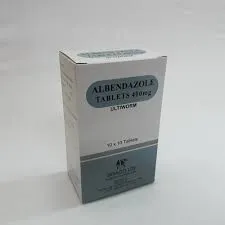- Afrikaans
- Albanian
- Amharic
- Arabic
- Armenian
- Azerbaijani
- Basque
- Belarusian
- Bengali
- Bosnian
- Bulgarian
- Catalan
- Cebuano
- Corsican
- Croatian
- Czech
- Danish
- Dutch
- English
- Esperanto
- Estonian
- Finnish
- French
- Frisian
- Galician
- Georgian
- German
- Greek
- Gujarati
- Haitian Creole
- hausa
- hawaiian
- Hebrew
- Hindi
- Miao
- Hungarian
- Icelandic
- igbo
- Indonesian
- irish
- Italian
- Japanese
- Javanese
- Kannada
- kazakh
- Khmer
- Rwandese
- Korean
- Kurdish
- Kyrgyz
- Lao
- Latin
- Latvian
- Lithuanian
- Luxembourgish
- Macedonian
- Malgashi
- Malay
- Malayalam
- Maltese
- Maori
- Marathi
- Mongolian
- Myanmar
- Nepali
- Norwegian
- Norwegian
- Occitan
- Pashto
- Persian
- Polish
- Portuguese
- Punjabi
- Romanian
- Russian
- Samoan
- Scottish Gaelic
- Serbian
- Sesotho
- Shona
- Sindhi
- Sinhala
- Slovak
- Slovenian
- Somali
- Spanish
- Sundanese
- Swahili
- Swedish
- Tagalog
- Tajik
- Tamil
- Tatar
- Telugu
- Thai
- Turkish
- Turkmen
- Ukrainian
- Urdu
- Uighur
- Uzbek
- Vietnamese
- Welsh
- Bantu
- Yiddish
- Yoruba
- Zulu
nóv . 30, 2024 19:28 Back to list
Guidelines for Properly Diluting Glutaraldehyde Solutions Safely and Effectively
How to Dilute Glutaraldehyde Solution A Comprehensive Guide
Glutaraldehyde is a powerful disinfectant and sterilizing agent widely used in medical and laboratory settings due to its efficacy against a broad spectrum of microorganisms. However, it is essential to utilize glutaraldehyde solutions at the appropriate concentration to ensure safety and effectiveness. This article provides a comprehensive guide on how to dilute glutaraldehyde solution safely and effectively.
Understanding Glutaraldehyde
Glutaraldehyde is an organic compound that is often used in a 25% solution form. It is potent as a biocide and fixative but can also be hazardous. High concentrations can cause irritation to the skin, eyes, and respiratory tract. Thus, diluting glutaraldehyde to a lower concentration is often necessary based on the specific application – typically between 2% to 5% for disinfection purposes. Understanding the reasons for dilution is crucial for safety.
Materials Needed
To properly dilute glutaraldehyde solution, gather the following materials
1. Glutaraldehyde solution (stock, typically 25%) 2. Distilled water (never use tap water, as it may contain contaminants) 3. Protective gear gloves, goggles, and a lab coat 4. Measuring tools graduated cylinder or measuring cup 5. Mixing container beaker or flask 6. Labeling materials chemical labels or markers for proper identification
Step-by-Step Dilution Process
1. Determine the Required Final Volume and Concentration
Before you start the dilution process, decide how much diluted solution you need and at what desired concentration. For example, if you want to prepare 1 liter of a 2% solution, the calculation would be as follows
- Volume of stock solution needed = (desired concentration / stock concentration) × final volume
Using the example above
- (2 g/100 mL / 25 g/100 mL) × 1000 mL = 80 mL
This means you will need 80 mL of the 25% glutaraldehyde solution.
2. Prepare Protective Gear
Always wear appropriate protective equipment, including gloves, eye protection, and a lab coat
. Glutaraldehyde can be hazardous upon contact, and proper safety precautions are paramount.how to dilute glutaraldehyde solution

3. Measure the Glutaraldehyde
Using the graduated cylinder, measure the calculated volume of the 25% glutaraldehyde solution (in our case, 80 mL).
4. Add Distilled Water
To dilute the glutaraldehyde, measure the remaining volume needed to reach your target (in our case, to make 1 liter, you need 920 mL of distilled water).
- Add the distilled water to a clean, dry mixing container first to ensure accurate dilution.
5. Mix the Solution
Carefully add the measured glutaraldehyde to the distilled water. Always add the glutaraldehyde to the water and not the other way around. This practice minimizes the risk of splashing and dangerous reactions. Stir the solution gently but thoroughly using a stirrer or magnetic stirrer to ensure complete mixing.
6. Label the Container
Once mixed, label the container clearly with the final concentration, date of preparation, and any hazard warnings. This information is vital for safety and compliance in a laboratory or medical setting.
7. Store Properly
Store the diluted glutaraldehyde solution in a cool, dark place, away from direct sunlight and heat sources. Make sure it is in a tightly sealed container and in an area restricted from unauthorized access.
Safety Considerations
Diluting glutaraldehyde comes with specific risks
- Ventilation Perform the dilution in a well-ventilated area or under a fume hood to avoid inhalation of fumes. - Spill Management Be prepared for potential spills. Have appropriate spill kits and neutralizers ready. - Disposal Follow local regulations for hazardous waste disposal when disposing of any unused glutaraldehyde or contaminated materials.
Conclusion
Diluting glutaraldehyde solution is a straightforward but critical process that requires attention to detail and adherence to safety protocols. By following the steps outlined above, you can effectively prepare a diluted glutaraldehyde solution suitable for its intended use while minimizing risks to yourself and others. Always prioritize safety by using personal protective equipment and ensuring proper storage and disposal practices.
-
Guide to Oxytetracycline Injection
NewsMar.27,2025
-
Guide to Colistin Sulphate
NewsMar.27,2025
-
Gentamicin Sulfate: Uses, Price, And Key Information
NewsMar.27,2025
-
Enrofloxacin Injection: Uses, Price, And Supplier Information
NewsMar.27,2025
-
Dexamethasone Sodium Phosphate Injection: Uses, Price, And Key Information
NewsMar.27,2025
-
Albendazole Tablet: Uses, Dosage, Cost, And Key Information
NewsMar.27,2025













